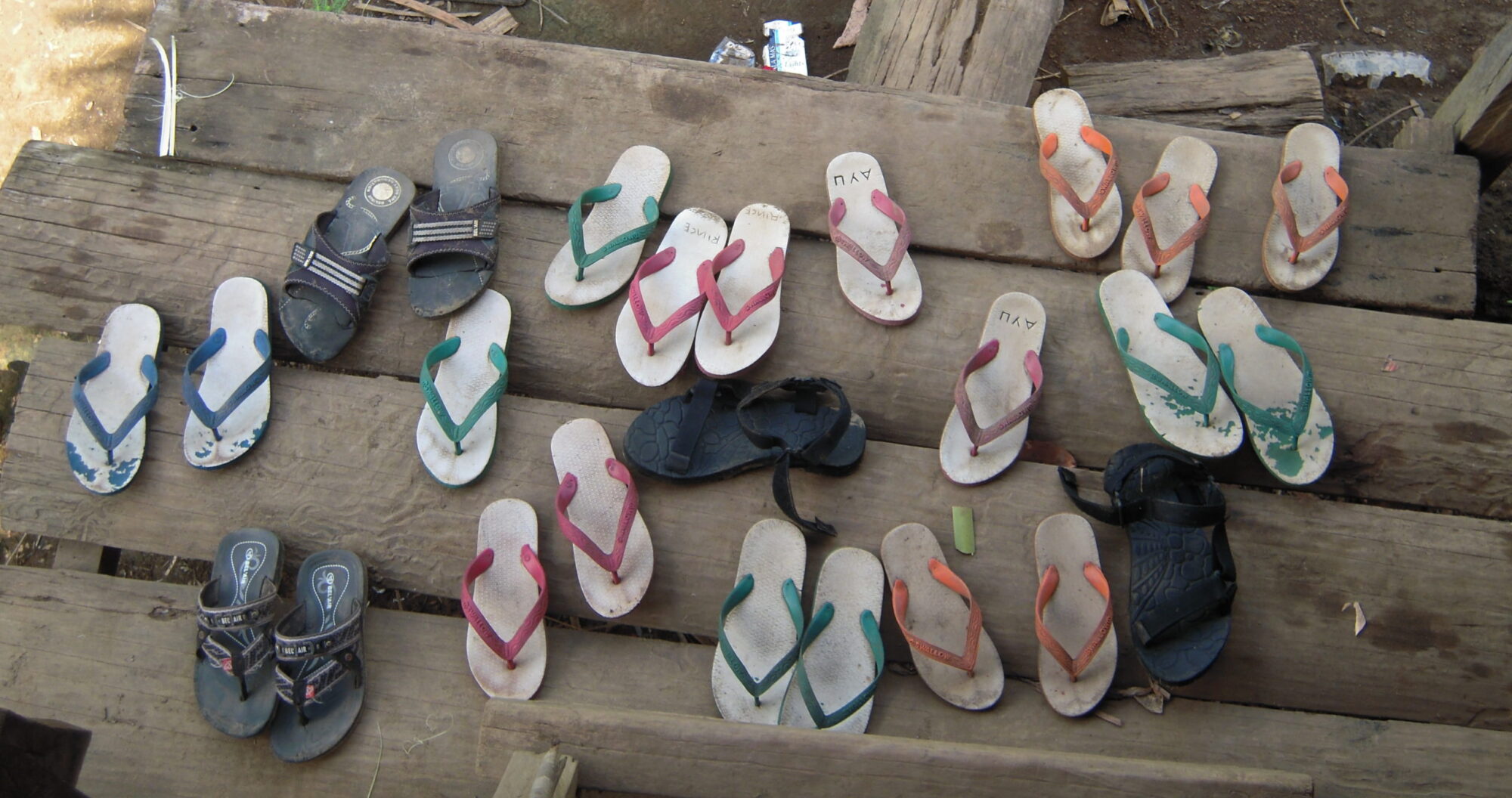This is a single-string spike fiddle, generally tuned a quarter of a tone under C3 and almost certainly of Muslim derivation (Track 7). Many other stringed instruments in the Indo-Malaysian area, such as the rebab, are said to have been introduced in Malaysia with Islamization (Schaeffner 1978: 247). It consists of a coconut resonance box, covered with lizard (kenbosu) or snake skin. The wood of the ba-a tree is used for the handle, and much attention is paid to the decoration and personalisation of this part of the instrument.
In the past, the strings were made from the fibres of the enau palm, but now fishing line or wire is used. The bow is made from bamboo, while the strings are still made from the fibres of the enau palm, which are cooked before use in order to make them more resistant. A long time ago, the bow’s strings were derived from the mane of a horse (jaran). A fundamental accessory for the geso is the dammar gum that is passed on the string of the bow to increase friction.
This instrument is used, in particular, to accompany the singing of the player. Songs called linga-linga are improvised on a fixed structure of four lines (togonjaya) that must all end with the same vowel.
Unlike many Wana musical expressions, the songs for voice and geso seem to demonstrate greater inventiveness and freedom. The melodic range of these songs exceeds the limit of the interval of a fourth. Usually the same note opens the first and the third line, while another note begins the second and fourth line as well as closing all of the lines and so serving as a tonal reference point for the whole piece. The instrumental music and the voice follow the same melodic structure, but it is performed by the instrument at an octave above the voice. The instrumental music dominates the text and not vice versa; in fact, Wana music adapts, through vocalic additions, a potentially infinite number of texts to a finite number of instrumental bases.
Photo
Video
Audio
